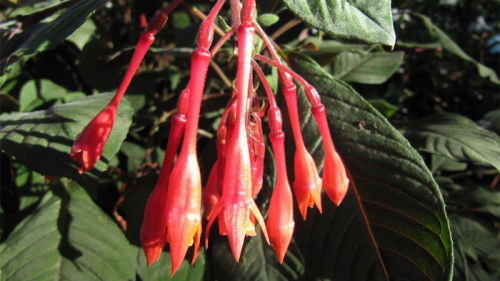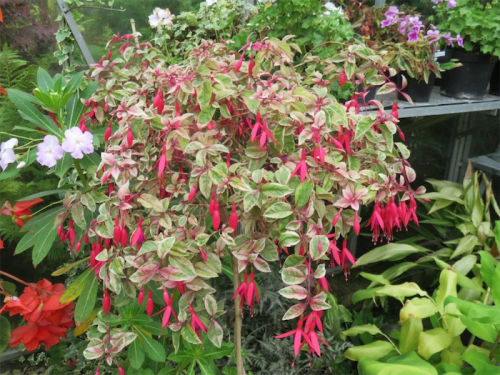
FRENCH botanist Father Charles Plumier, considered one of the most important of the botanical explorers of his time, introduced fuchsia to the western world.
Plumier (1646-1704) identified and described fuchsia, which he discovered on the island of Hispaniola in the Caribbean in 1696-7.
Of the large numbers of migrants leaving Europe for the New World, many were dying from malaria. Father Plumier was in South America looking for the cinchona tree, which provided quinine to combat malaria.

He published his first description of fuchsia (Fuchsia triphylla) in 1703 naming it after Dr Leonhart Fuchs (1501-1566), chair of medicine at Germany’s Tubingen University. Plumier was greatly influenced by Fuch’s work, especially in herbal medicines.
Fuchsias were introduced to Australia from England by the early settlers. I know of two examples that are more than 100 years old – both are virtually small trees, one at an old bank building in Gundagai and the other at the old gold store at Beechworth.
These days, fuchsias wax and wane in popularity. In the ’70s and early ’80s, when I was growing thousands of fuchsia, there was almost an explosion of interest. Virtually every town had its fuchsia nursery; then, for no apparent reason, they fell from favour.
With renewed interest, gardeners are realising how easy they are to grow.
So here are a few hints on growing fuchsias, to which there is no limit to the varieties and colours available:
- In winter they lose their leaves and look like they’ve died. Yet within a few warm days in spring the new shoots start appearing on the old wood. Simply trim off those branches that have not sprouted.
- They require a shady position with the sun off them by 10am in summer. They grow well under shade cloth (75 per cent).
-

Fuchsia… perfect for a hanging basket. In pots or baskets always use a premium potting mix. In the garden, a well-drained spot digging in some good compost and or rotted leaves, under deciduous trees or shrubs is ideal.
- Even in winter keep the soil and roots in pots or baskets moist. In summer, it’s usually necessary to water every day.
- If growing in a pot, raise it off the ground and don’t use a saucer under the pot.
- Regularly deadhead or pinch out new shoots to encourage more flowers.
With the abundance of flowers, feed fuchsias every few weeks with a certified organic fertiliser such as Maxicrop Seaweed Nutrient or Neutrog Seamungus.
And for fuchsias that produce enough fruit (the size of small grapes after flowering) there are recipes for fuchsia fruit cake and fuchsia dessert sauce searchable on the internet.
The Geranium and Fuchsia Society holds meetings at St James Church Hall, Gillies Street, Curtin, 2pm-4pm, on the first Saturday of every month.
Jottings…
- Deadhead and feed roses now.
- When to plant veggies? If they’re in the garden centres, it’s time to plant.
- Check out the David Austin Rosa “Munstead Wood”, the deepest of red roses.
Who can be trusted?
In a world of spin and confusion, there’s never been a more important time to support independent journalism in Canberra.
If you trust our work online and want to enforce the power of independent voices, I invite you to make a small contribution.
Every dollar of support is invested back into our journalism to help keep citynews.com.au strong and free.
Thank you,
Ian Meikle, editor




Leave a Reply